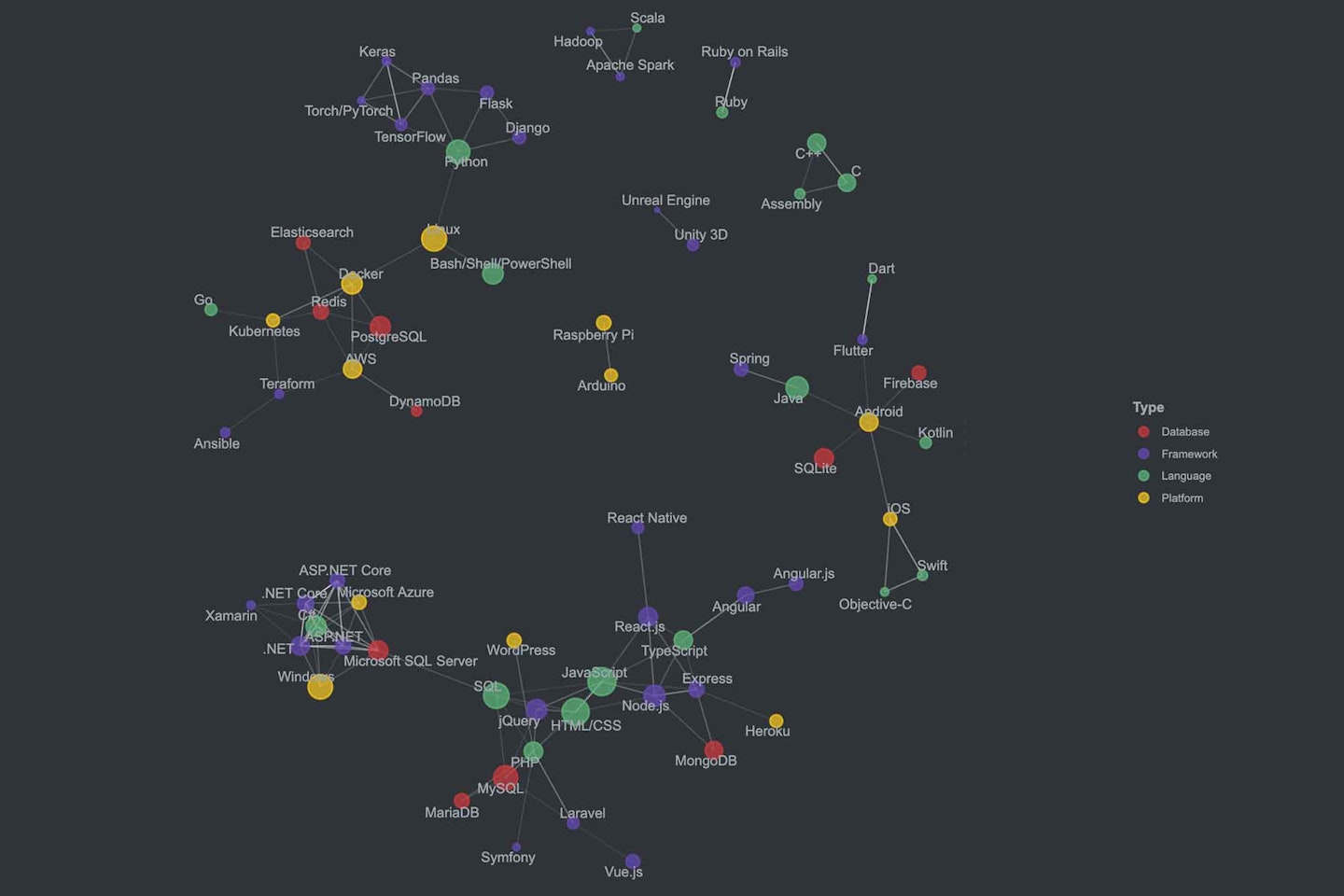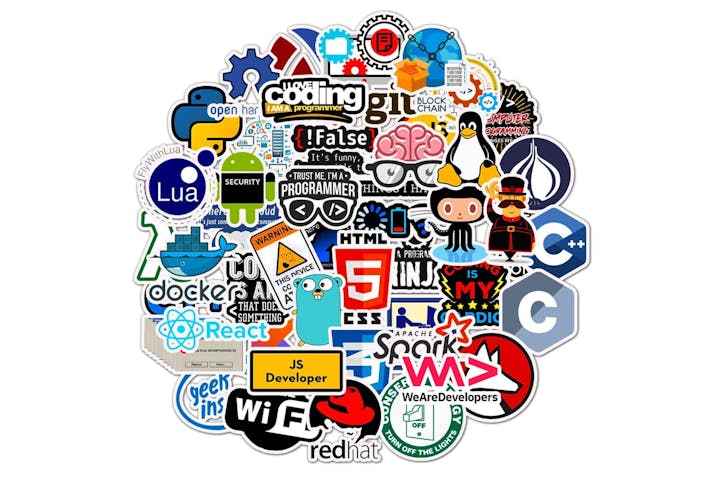Long-established programming languages such as Java, C, or JavaScript are usually the right choice for beginners. But are they still future-proof? These are the players of tomorrow that you should learn in 2021.
New programming languages are becoming more and more important. Some of them are growing at high speed and are also appearing more and more frequently in job advertisements. Depending on whether you develop for the web, backend, or smartphones – there are new programming languages almost everywhere around the corner that you definitely should go in for a closer look.
Learn these programming languages in 2021
Languages such as JavaScript, Python, C++, or Java are still on top of the most widely used programming languages. But for how much longer? Are the programming languages of the last century still modern enough? Some new programming languages are pushing forward and worth learning.

Web development: TypeScript
In web development, there have always been the same languages that you should be able to code. If you want to develop in this segment, you cannot avoid JavaScript. Anyone who knows JavaScript is definitely in a good position. Since 2012 there is a new player from Microsoft: TypeScript. In contrast to JavaScript, TypeScript provides static typing through type annotations to enable type checking when compiling and gives you more control over your code.
But don't worry! Those who master JavaScript will also be able to learn the ropes with TypeScript quickly. Because TypeScript understands JavaScript and vice versa. You can continue to use libraries and frameworks or other existing JavaScript code with TypeScript without any problems. Also important: In the end, TypeScript is transpiled into JavaScript so that TypeScript is compatible with just as many browsers. Getting involved with TypeScript is also worthwhile because well-known frameworks and libraries such as Angular or React and, for some time now, Svelte has been relying on the language. If you master it, it can make your development processes faster and lead to more readable code. Many developers who have come in touch with TypeScript do not want to go back to their big brother JavaScript.
Dart
Dart is an ECMA-standardized programming language from Google, whose developers intended to use it in web browsers. The still young language should be a modern alternative to JavaScript that overcomes some of the problems of the long-established language of the web. In the Stack Overflow ranking of the most popular technologies in 2021, Dart is in 7th place behind Julia. This is not so surprising. The Dart-based UI toolkit Flutter for platform-agnostic development of user interfaces had a notable contributor increase in 2021.
Python for data science and automation
Although Python has a few more years under its belt and dates back to the 1990s, the language, which relies on a tight programming style, is growing steadily. This year has once again established itself as the second most popular language, ahead of Java. In the Stack Overflow ranking of the most wanted programming languages, Python even took the top spot in 2021. A significant advantage of Python is platform independence: It runs on almost all operating systems. You can use it to program object-oriented or procedurally. In areas like data science, machine learning, and artificial intelligence, you cannot avoid Python. Overall, however, the language can be used almost universally. With the appropriate tools, user interfaces are even possible. Python is also easy to learn and has many libraries. Not yet convinced? Here we have seven good reasons why you should learn Python.
Android: Kotlin is incredibly popular
In May 2017, Google declared Kotlin to be the official Android programming language alongside Java. Since then, the language from the Jetbrains house has grown inexorably. The language is incredibly popular and continues to be number 4 of the fastest growing programming languages on GitHub. It has many advantages over Java and makes switching from applications with Java codebase easy. Thanks to the interoperability, you can rewrite your project bit by bit in Kotlin.
Why Kotlin instead of Java? Kotlin is only a few years old and has many modern features on board that have only gradually been added to Java more badly than right. Due to the Null safety, the straightforward syntax for Lambda functions and language constructs, which significantly reduce the amount of code compared to Java, Kotlin is definitely one of the must-haves for Android. Anyone writing a new project should rely on Kotlin because Jetbrains is working on features for multi-platform projects with Kotlin. So you can write native apps for Android and iOS.
iOS: Swift instead of Objective-C
If you are still developing iOS apps with Objective-C, it is time to learn Swift. The language was introduced in 2014 and is considered a modern alternative to Objective-C for iOS and macOS. It has many similarities to Kotlin and at least as many advantages over Objective-C as Jetbrains' language over Java. Swift makes it much easier to develop apps for iPhones and Co., which is why Apple developers should have a closer look at the language since 2014. If you still haven't, you should write “Learn Swift” on your list of resolutions for 2021.
Go from Google for cloud computing
The open-source programming language Go was developed by Google due to the dissatisfaction with Java and C++. It is particularly relevant for cloud computing. The focus of Go is clearly on efficiency and productive development. To not endanger existing code, Go should remain compatible with the first version in later versions. Those who master Go can save time, but familiarization is quite time-consuming and tedious.
Rust: Reliable, performant, and productive
These are Mozilla’s words to advertise its programming language, Rust, which was announced in 2010. In 2021, Rust continues to stay on the top of the list of the most popular programming languages, a long way from the second most popular language, TypeScript. Rust relies on static typing and wants to prevent Null pointer and stack overflow errors as far as possible at runtime. Rust positions itself between low-level languages like C and higher languages like Java. By combining different programming paradigms, the programming language allows a high level of abstraction. It relies on a typing system that is common for functional languages instead of a garbage collector for memory management. The language can be used for CLI tools, WebAssembly, and network services, among other things.
Rust is an alternative for C and C++ that aims to eliminate many dangers and errors at runtime. Since Rust is still relatively young, tools and libraries are still lacking in some places. However, with the announcement of AWS that it intends to become more involved in further developing the increasingly popular programming language in the future, this could change soon. Need more reasons to learn Rust?
Speaking of WebAssembly: Web developers who have recognized the advantages of WebAssembly but have so far been reluctant to learn a low-level language such as Rust or C in addition to JavaScript should keep an eye on AssemblyScript. AssemblyScript is a type of TypeScript that produces WebAssembly binaries. The open-source project, which is still in the beta phase, aims to provide TypeScript-enabled web developers with a tool that will make it easier for them to get started with WebAssembly.











